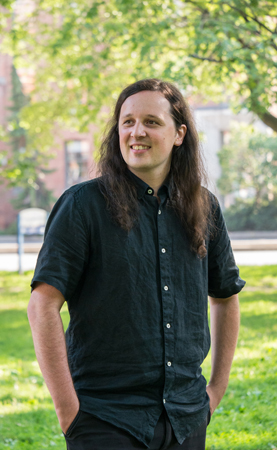Posted: 11 January 2022
Our new Curator, Darryn Doull, has been hard at work in his new role at KWAG since joining the team in late summer 2021. Here, Darryn shares some of the ideas guiding the development of our exhibition program for the years ahead.

Recently, I have been trying to think otherwise about exhibitions.
When visiting a gallery, experiencing an exhibition or researching a collection, the visual and textual understanding of these works and spaces quickly lead to processes that are more deeply personal and nuanced. In the art museum, art history is indelibly present, etched into the very strategies of presentation and architectures that constitute a traditional gallery space. These so-called canons, however persistent, are incomplete.
The foundations of our collections carry faults: symptoms of exclusionary collecting habits of the past. Tectonic social shifts have blown these faults wide-open over the recent years. Art museums now require new forms and new intentions to be accountable to a contemporary audience.
In “Otherwise, Ferguson,” the professor, author and artist Dr. Ashon Crawley writes:
To begin with the otherwise as word, as concept, is to presume that whatever we have is not all that is possible. Otherwise. It is a concept of internal difference, internal multiplicity. The otherwise is … a movement towards, and an affirmation of, imagining other modes of social organization, other ways for us to be with each other. Otherwise as plentitude.
In discussions with artists and curators over the last several months, it is clear that I am not alone on this search for otherwise: other ways of thinking about an exhibition schedule, other ways of responding to works held in a collection. I have been challenging myself to think about other possibilities in programming, commissioning, writing and collecting. To think otherwise does not mean to add something to a pre-existing structure. It requires a re-evaluation of the structure altogether. The results will vary. Some will be tangible, while others may be invisible to our publics, but are nonetheless meaningful.
These other literacies must prioritize networks and relationships, specificity and plurality, accessibility and integrity. They shape how we think of our collection as a living process with changing needs, as well as how we mobilize our available resources to serve our community, and each other, as we continue to grow.
This work must remain grounded and evolving – there is no other way.
